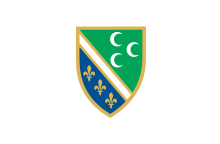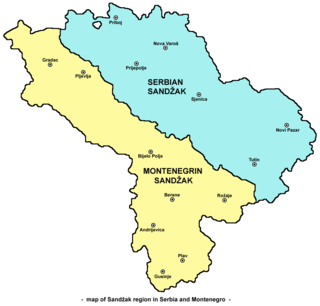
Sandžak is a historical geo-political region located in the southwestern part of Serbia and the eastern part of Montenegro. The name Sandžak derives from the Sanjak of Novi Pazar, a former Ottoman administrative district founded in 1865.
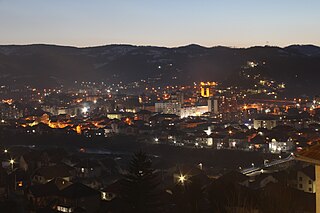
Bijelo Polje is a town in Montenegro in the northern region on the Lim River. It has an urban population of 12,900. It is the administrative, economic, cultural and educational centre of northern Montenegro.

Berane is a town in Montenegro in the northern region. It is former administrative centre of the Ivangrad District. The town is located on the Lim river. From 1949 to 1992, it was named Ivangrad in honour to people's hero Ivan Milutinović. According to the 2023 census, the town had a population of 9,923, whereas its municipality area had 25,162 people.
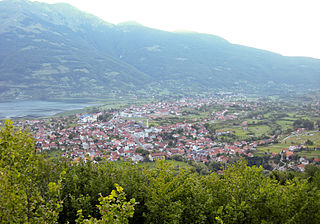
Plav is a town in Montenegro in the northern region. It has a population of 3,717. Plav is the centre of Plav Municipality.
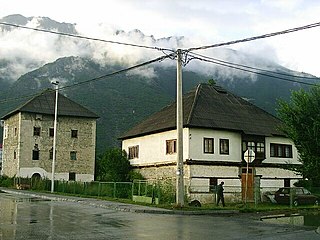
Gusinje is a small town in Montenegro in the northern region. According to the 2011 census, the town has a population of 1,673 and is the administrative center of Gusinje Municipality.
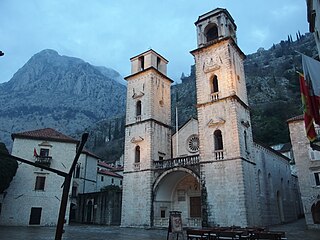
Eastern Orthodox Christianity is largest religion in Montenegro, but there are also sizeable numbers of adherents of both Catholic Christianity and Islam.
Bihor is a geographical region in northeastern Montenegro, located near Jagoče and northeast of Lopare. The area falls under three municipalities: Berane, Bijelo Polje and Petnjica. It is named after Bihor, a former medieval town once located near Bijelo Polje. The region is mainly inhabited by Bosniaks, with a minority of Serbs and Montenegrins.

Kuči is a historical tribe (pleme) of Albanian origin and a region in central and eastern Montenegro, north-east of Podgorica, extending along the border with Albania. Processes of Slavicisation during the Ottoman era and onwards facilitated ethno-linguistic shifts within much of the community. As such, people from the Kuči today largely identify themselves as Montenegrins and Serbs, with a minority still identifying as Albanians. In other areas such as the Sandžak, many Muslim descendants of the Kuči today identify as Bosniaks.

Bosniaks of Serbia are a recognized national minority in Serbia. According to the 2022 census, the population of ethnic Bosniaks in Serbia is 153,801, constituting 2.3% of the total population, which makes them the third largest ethnic group in the country. The vast majority of them live in the southwestern part of the country that borders Montenegro and Kosovo, called Sandžak. Their cultural center is located in Novi Pazar.
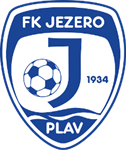
FK Jezero is a Montenegrin football club based in the town of Plav. Established at 1934, the club plays in the First League of Montenegro.
Rastoder or Hrastoder is a Slavic surname. The bearers are predominantly Bosniaks of Montenegro and ethnic Muslims originating from Bihor, a region in northern Montenegro (Sandžak), which encompasses parts of the municipalities of Berane and Bijelo Polje.

Bosniaks in Kosovo are a South Slavic Muslim ethnic group living in Kosovo, numbering 27,553 according to the 2011 census. The vast majority of Bosniaks are adherents of Sunni Islam.
Radončić is a surname found mostly in Montenegro and the Sandžak region of Serbia. In those areas, it is related with the Radončić brotherhood of Old Kuči. The village Radona with 55 households is attested in the nahiya of Kuči in the defter of the Sanjak of Scutari in 1485. Notable people with the surname include:
Sead is masculine Bosnian given name equivalent to the Arabic masculine given name Sa'id.
Bosniakisation designates the process of ethnic and cultural assimilation of non-Bosniak individuals or groups into the Bosniak ethnocultural corpus. Historically, bosniakisation was directed mainly towards some other South Slavic groups, like ethnic Muslims (Muslimani) in former Yugoslavia. Since Bosniaks are Sunni Muslims, Bosniakisation was also manifested towards some distinctive ethnoreligious minorities within Serbian and Croatian national corpus, mainly towards Serbian Muslims and Croatian Muslims.

The Plav–Gusinje massacres of 1912-1913 occurred between late 1912 and March 1913 in the areas of the modern Plav and Gusinje municipalities and adjacent areas. More than 1,800 locals, mostly Muslim Albanians from these two regions were killed and 12,000 were forced to convert to Orthodoxy by the military administration put in charge of these regions by the Kingdom of Montenegro which had annexed them during the First Balkan War.
Avram Cemović nicknamed Avro (1864–1914) was a member of notable Serb family Cemović from Vasojevići who is best known as one of the commanders of rebels against Ottoman Empire in the Lower Vasojevići region and military officer in the Army of Montenegro during the First Balkan War.
